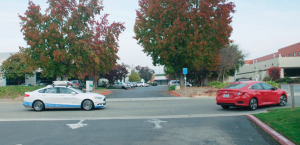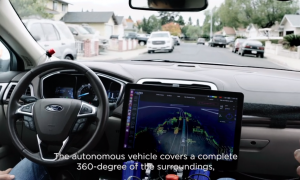Use Case
Ridecell, a ridesharing company with an autonomous fleet system, wants to deploy its service. It wants to add a redundant safety system into its current self-driving infrastructure. Ridecell purchased the GRASP learning-based predictive software package.
With the Camera and Lidar sensor suite installed on Ridecell’s autonomous fleet and the interface GRASP team provided, the tech team found it easy to translate the sensor output to the state representation that GRASP needs.


Figure 1: Ridecell’s autonomous car with GRASP software on a typical traffic scenario
The tech team then upgraded the software stack with GRASP and went for a test drive. GRASP asked the test driver to put in the target destination as soon as it was turned on. With the city map loaded, GRASP offered a route, which was then followed by the Ridecell’s self-driving solution. Every behavioural decision made by the Ridecell’s system was passed into GRASP for a safety check. Based on the pre-trained reinforcement learning model, GRASP warns of any risky move attempted by the Ridecell’s system. After the test drive, the tech team were ensured that there was an additional system which was reliably evaluating the safety of the actions taken by their original system. Ridecell then decided to add GRASP to its infrastructure for deployment.